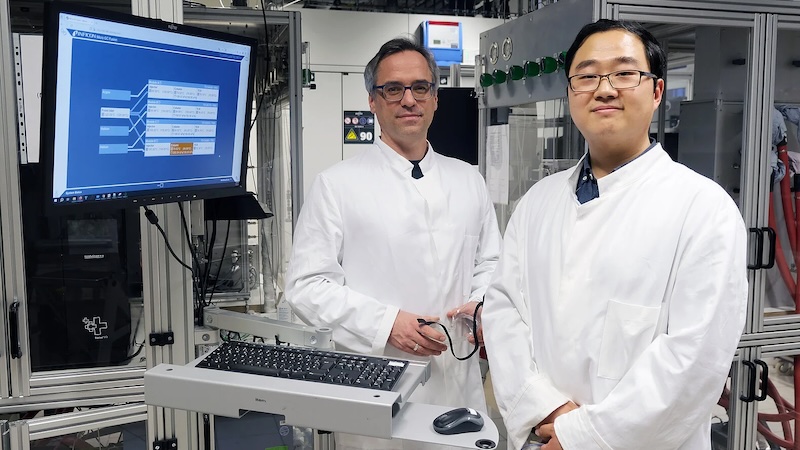Researchers at Kiel University have developed a hydrogen catalyst to accelerate the recovery of hydrogen converted into ammonia. This should significantly reduce the conversion losses.
Germany can probably only meet its demand for climate-friendly hydrogen by importing it from South America or Australia. However, for such long transportation routes, it is necessary to convert the hydrogen – for example into ammonia. It must then be recovered.
In order to facilitate this process, researchers at the Institute of Inorganic Chemistry at Kiel University (CAU) have developed an inexpensive and effective hydrogen catalyst.
Hydrogen catalyst accelerates release from ammonia
The storage of energy from wind or solar power plays an important role in the energy transition. However, “storing energy in the form of chemical compounds such as hydrogen also has many advantages,” says Malte Behrens, Professor of Inorganic Chemistry at Kiel University. This is because the energy density is high and the chemical industry needs hydrogen for many processes.
Through electrolysis with electricity, so-called “green hydrogen” can be produced from renewable energy sources. This process does not produce any CO2. However, it is not easy to import hydrogen from regions where there is sufficient wind and solar power. However, the chemical conversion of hydrogen to ammonia is considered an alternative, as ammonia already contains a relatively high amount of hydrogen.
“Ammonia can be easily liquefied for transportation. It is already being produced on a megaton scale, shipped and traded worldwide and is therefore of interest to us,” says chemist Dr. Shilong Chen. The necessary infrastructure for this already exists.
Together with other project partners, the Kiel researchers have been looking for some time at how hydrogen can be released from ammonia after transportation. They have now developed a hydrogen catalyst that should significantly accelerate this process.
Special metal combination
Malte Behrens explained: “A catalyst has the task of accelerating a chemical reaction and is therefore directly responsible for the efficiency of material and energy conversions.
The faster the ammonia reforming process can take place, the lower the conversion losses caused by chemical storage in ammonia. The catalyst also has two special features, according to sub-project leader Shilong Chen.
On the one hand, it consists of the relatively inexpensive base metals iron and cobalt. Secondly, we have developed a special production method that allows a very high metal loading of the catalyst.
According to the researchers, up to 74 percent of the material consists of active metal particles. Alternating with the carrier particles, cavities in the nanoscale range are created. The combination of the metals in a common alloy is crucial.
The researchers now aim to further investigate the hydrogen catalyst, bring it into practical use and produce it in larger quantities.










